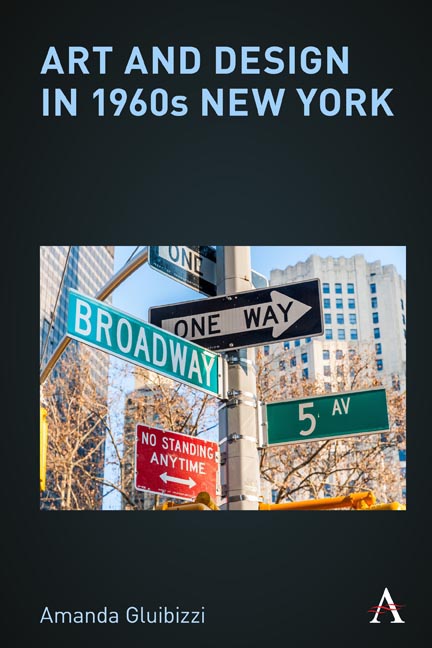Book contents
- Frontmatter
- Contents
- List of Figures
- Acknowledgments
- Introduction: The Entire Visual World
- 1 Designs on 1960s New York: The Image of Pop and North by Northwest
- 2 Breaking the Rules with the Beetle: Volkswagen’s Revolutionary Advertising and the Visual Wit of Andy Warhol’s Pop Art
- 3 Navigating by the Vernacular Glance: Billboards, Signs, and the Urban Combine
- 4 Way-Words: Wayfinding by Following Pieces
- 5 What’s the Matter with the Megalopolis?
- Notes
- Bibliography
- Index
1 - Designs on 1960s New York: The Image of Pop and North by Northwest
Published online by Cambridge University Press: 02 March 2021
- Frontmatter
- Contents
- List of Figures
- Acknowledgments
- Introduction: The Entire Visual World
- 1 Designs on 1960s New York: The Image of Pop and North by Northwest
- 2 Breaking the Rules with the Beetle: Volkswagen’s Revolutionary Advertising and the Visual Wit of Andy Warhol’s Pop Art
- 3 Navigating by the Vernacular Glance: Billboards, Signs, and the Urban Combine
- 4 Way-Words: Wayfinding by Following Pieces
- 5 What’s the Matter with the Megalopolis?
- Notes
- Bibliography
- Index
Summary
In the 1962 edition of Art in America dedicated to “New Talent USA,” 34-year-old Andy Warhol contributed a startling artist's comment. Whereas most of the artists included in the issue described their process, discussed their work in formal terms, or included a short biography, Warhol provided a statement about America and his work's position as a reflection of life in the United States. He wrote, “I adore America and these are some comments on it. My image is a statement of the symbols of the harsh, impersonal products and brash materialistic objects on which America is built today. It is a projection of everything that can be bought and sold, the practical but impermanent symbols that sustain us.” This brief notice has been read as a political statement intended by Warhol as a repudiation of the consumer culture in which he found himself, as well as its opposite, Warhol's denial of the need to insinuate a political message into his work (and, indeed, Warhol's future embrace of all things consumerist). While it may be the case that the statement is both, or neither, what interests me instead is Warhol's use of the term “image” and his insistence on referring to his image. For, rather than discuss his images, Warhol pointedly used the word in the singular, suggesting that he was not merely referring to his paintings but rather was developing a trademark for himself, a brand by which his consumers would know him because it was his image. In addition to the use of commercial and popular sources, it is this acknowledgment of the image and its importance that links the work of pop artists such as Andy Warhol to the advertising strategies of the late 1950s and, more specifically, to advertising's Creative Revolution underway beginning in 1959.
The “Image” in Pop Discourse
At the time of Warhol's 1962 statement, American pop art was beginning to coalesce around the figures art historians most commonly associate with the movement: Warhol, James Rosenquist, Roy Lichtenstein, and Claes Oldenburg. But suggestions of pop had been detected earlier, with critic Lawrence Alloway in Great Britain dating the first explorations of pop to Francis Bacon's 1949 figure paintings and with Robert Rauschenberg and Jasper Johns's use of quotidian objects and images in their work of the early-to mid-1950s enlisted as initial expressions of an American pop art.
- Type
- Chapter
- Information
- Art and Design in 1960s New York , pp. 19 - 42Publisher: Anthem PressPrint publication year: 2021



